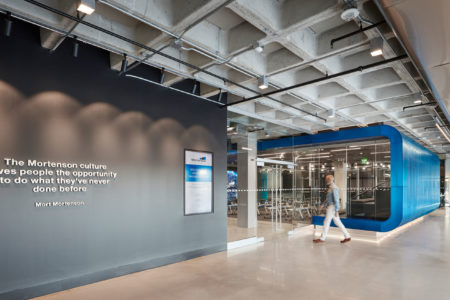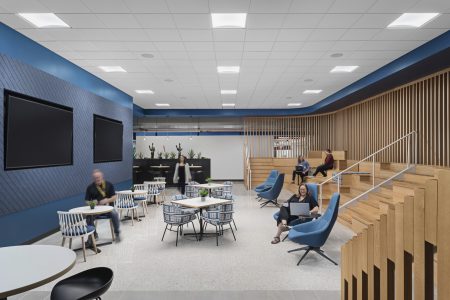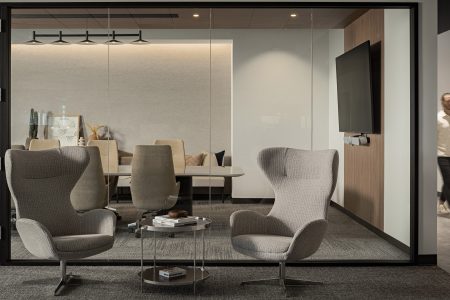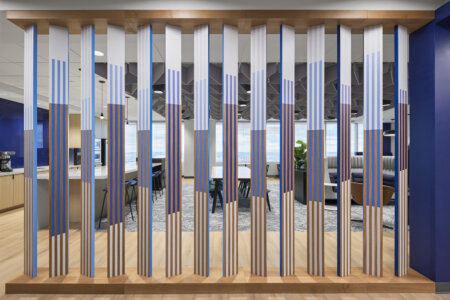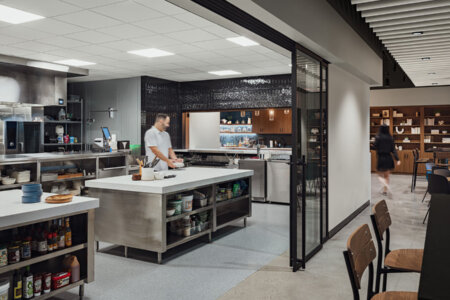2024 Workplace Trend: Experience Hubs
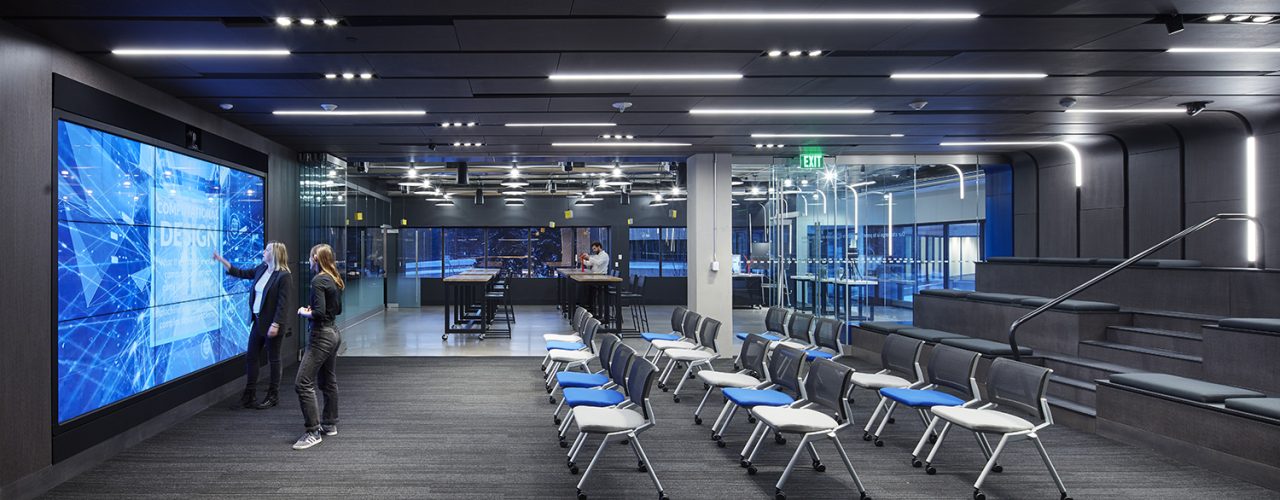
RSP Principal Alissa Franconi explains how companies are creating connection and experience hubs to continue investing in culture while navigating uncertainty in the commercial real estate market.
This article was originally published in Work Design Magazine.
Change is the only constant in workplace design and strategy. The dramatic shifts of the last few years have taught everyone a great deal about flexibility, innovation, and what we all need to thrive. While the hybrid work model has been successful in many cases, our clients are looking for new ways to bring their people together. Not just physically but culturally as well. One of the biggest trends we’re using to solve that challenge is the experience hub—a flexible, multi-purpose space that serves a range of purposes across a workday, work week or work year.
Forget Hotel Ballrooms – Bring on Regional “Hubs”
Like the hybrid work model, the experience hub looks a little different for each organization. For one large (confidential) client, the hybrid model is working in terms of productivity. But leadership found that quarterly meetings that bring everyone together in person were a missing piece to maintaining and growing company culture and building relationships among staff. Rather than continuing to spend the money on various hotel ballrooms and catering services, they are creating three large regional experience hubs in different parts of the country.
These facilities will cover over 20,000 square feet with lounge areas, break-out rooms, theater seating, a ghost kitchen for catering and a large café for meal service. Above all, the technology has to be integrative and state of the art, so that employees from any office can easily plug and play for training and presentations.
Creating “Catch-all” Spaces in Existing Offices
Other clients are adding experience or connection hubs to their existing facilities. For one of our well-known (but again, confidential) financial clients, we are working on adding a new type of space to their campus. We designed it to be very flexible with room for town hall meetings, but with modular partitions to create adaptable conference rooms. A ghost kitchen can support catering for meetings across the campus, big and small. The new space will also have a coffee and gelato shop with lots of lounge seating and a game room.
The space is sort of a “catch-all” for any type of gathering, and it’s all right on their doorstep. We helped yet another of our clients, Mortenson, create a highly tech-enabled innovation center that serves a variety of internal and external uses, showing that this trend is making its way into companies at every level. This example underpins the point that these experience hubs don’t have to be solely internal. Their flexibility makes them ideal for industry or community events, like lectures, films or parties.
Are Hubs the Solution?
Diving a little deeper, we see the experience hub as the culmination of a few different trends. First and foremost, no one truly knows what the future holds for commercial real estate. Office vacancy rates continue at higher-than-average levels. Companies are weighing the pros and cons of shrinking their floorplates and moving to unassigned seating. And individuals are looking for hospitality and residential inspired spaces to feel at home in the work setting. Adding in the broader context for the need for the adaptive reuse of buildings in a number of sectors, and these experience hubs become more than a solution for individual organizations—this could be a trend that pushes the workplace and the entire commercial real estate industry into a better place and a “new normal.”
Featured Image: Mortenson Innovation Center | Photo by Corey Gaffer © Gaffer Photography



